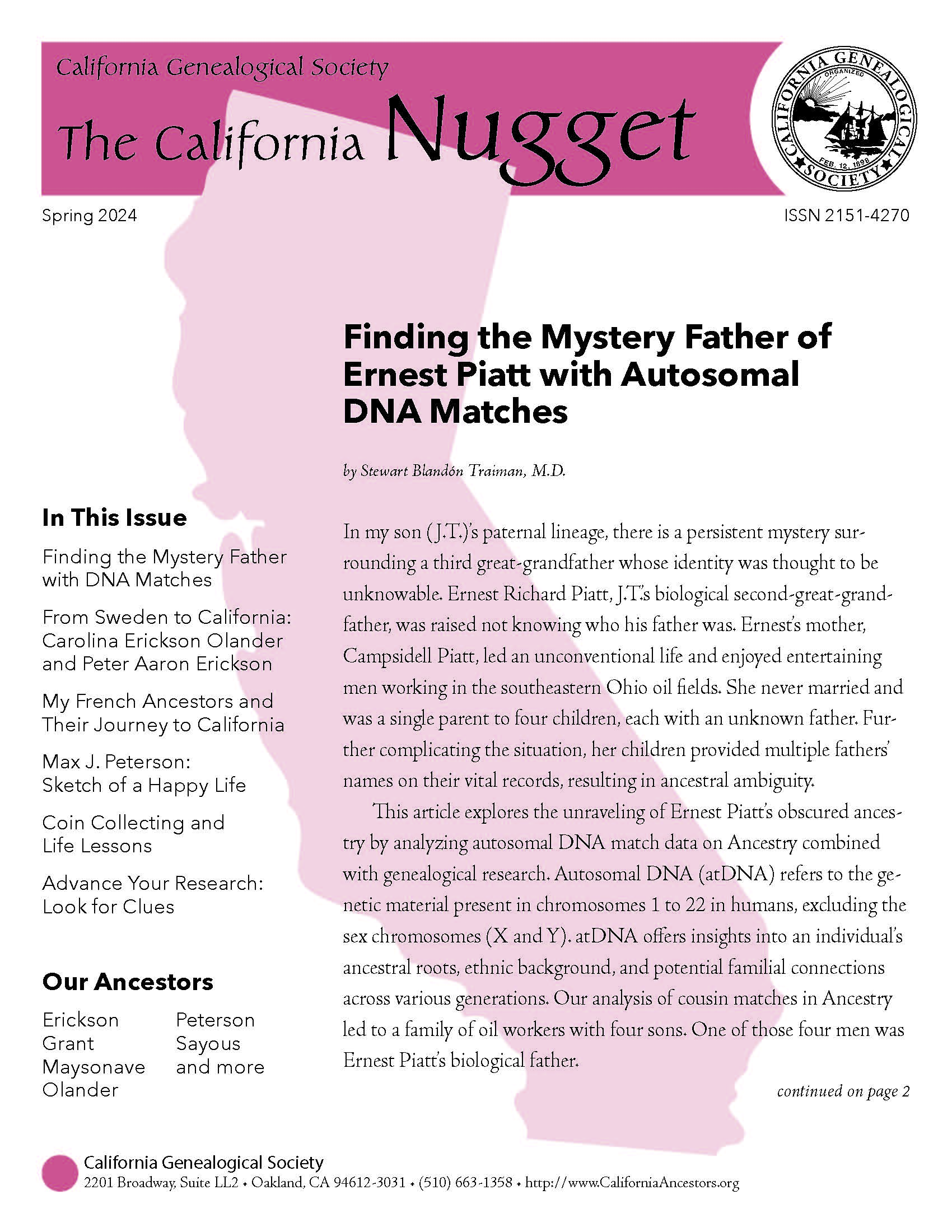What is your genealogy end product? Is it creating a six-generation pedigree chart? Or an as-far-back-as-you-can-get Ahnentafel chart? Maybe it’s building a tree that can be printed on banner paper and hung on a wall. For me, my end goal is usually a written narrative of a person’s life.
Genealogy research is super fun. I love making one discovery after another, building a picture of someone’s life, and breaking through to the next generation. Collected facts can be displayed in pedigree charts, Ahnentafel lists, and trees but these formats still don’t convey the life experience of an ancestor. Only a narrative will convey how I interpret my discoveries and inform my readers about an ancestor’s life. But that means, having to write something that a computer can’t generate for me.
Writing is tough, but with perseverance and diligence, the end product is well worth the effort. Over time I’ve become more comfortable committing to this creative struggle and just completed the second draft of my autobiography. The practice of writing always teaches me something and these are the steps I take.
The Process
My first goal is to just get all the thoughts down on paper or onto the computer. It doesn’t matter how it sounds, just get it out of my head. Sometimes it comes out as an outline or bullet points, sometimes as full paragraphs of prose. Neither method is incorrect. My first sentences can be sloppy, with poor English grammar. I don’t care. I know I’ll read this again. The objective is to create the initial skeleton or scaffolding that will later be embellished and improved. The big idea here is to not care about perfection, just vomit it all out. Once it’s all out of my head and into another repository, I feel better.
Next comes the real work, which is editing. I look at the scaffold I’ve built and start improving it. Turning bullet points into sentences or even paragraphs. Finding the nuanced words that will convey my exact thoughts to my readers. There is no formula or software for this part. It is a creative internal struggle to breathe color and life into my words. Nor is this a one-time re-read. On that third, fourth, or fifth reading, I can see the paragraphs as whole pieces and better words and better clarity will come to me. It takes multiple passes to achieve comfort while hoping for perfection.
I noticed, especially when writing autobiographically, I tend to write in the negative. Negative memories may be the strongest and therefore may be the first thing I think about when trying to capture an experience. Finding the “juicy” bits of an ancestors’ life is absolutely great material to write about, but I need to not define their whole life experience by just those titillating events. When I re-read a piece, I try to add in the good of the experience, of the person, of the place. I add positive layers in subsequent drafts.
I then look at the social context to see if it will enhance my writing. What was happening in politics at the time? What was happening in the place where my subject lived? Reading newspapers of the time is illuminating for social context. Or on a more personal level, did anyone just die or get married that somehow influenced the events I’m writing about. I also draw from personal historic emails, journals, letters to friends and family, greeting cards that I kept, and anything in the family archive. If I can, I try to understand the full context of what was happening, personally, locally, and globally that had some impact on the story. In my personal narrative, LGBTQ history plays a significant role and gives context to my decisions.
I then add in emotion. Genealogy writing is technical writing about dates, facts, history, and citations, but it doesn’t have to be dry. There may not be much emotion to add when writing about unknown historic people, but we can guess at how they may have felt about a marriage, a death, immigration, or other events in their lives. In my autobiography, I look at paragraphs and think about how I felt, how that person or event affected me, and I add that in as the next layer. One, well-placed, descriptive word is sometimes enough to convey a sense of emotion.
In my edits, I also look for words that can be described better. “There were times I felt like I could fall asleep on the sidewalk.” Might turn into, “At times my apnea-driven sleep deprivation demanded that I curl up on the cold concrete sidewalk.” Adjectives always enhance the senses for the reader. They are more descriptive of sight, sounds, sensations, tastes, or smells. Adjectives are description enhancers that are added in the editing process. I use thesaurus.com when looking for a fitting word.
I try to notice clichés and standard colloquialisms. Sometimes they are appropriate for the sentence, and I leave them in, but sometimes the concept can be better described by using unique words. Relying on standard phraseology is not creative. Too many clichés are dull for the reader. I try to notice if too many sequential sentences start with “I”. I want to break repetitive patterns of writing by using different sentence styles.
Another layer of editing is about asking, what am I not saying here? What am I assuming my reader already knows? It is not a good practice to leave things to assumptions. Sometimes things are left deliberately unsaid, to allow the reader to “read between the lines,” but it’s another to leave gaps in communication. Identifying the assumption gaps may only be found by letting another person read my work. A good mental exercise is to add a layer for who, what, when, where, and most importantly why. When it makes sense to do so, I will ensure that all these questions are addressed somewhere in the narrative. Answers can be layered into sentences as descriptive words. This 5-question exercise helps to identify and fill in assumption gaps.
When I’m in writing mode, my brain offers ideas when I’m not sitting at my computer. I’ve developed a practice of using the Notes app on my phone to capture those fleeting thoughts. I also have a waterproof writing pad in my shower, where some of my best ideas spontaneously appear. A writing pad prevents them from going down the drain.
The last layer of editing is fixing grammar. I’m a fan of Grammarly and have it installed to work with many applications on my computer. I don’t sweat the grammar in my writing because I let a computer help me with that part.
Once all that is done – I walk away. For me, this is the most crucial step. It is vital to let the writing leave my head, my conscious thoughts, for some amount of time. I take a walk with the dog, fold the laundry, make dinner, do anything to get out of the writing headspace. I let it lay fallow for a day, a week, or even a month. When I come back to it, I see the piece with fresh eyes. Again, this is a critical step for me so I must plan for it before reaching a deadline.
Conclusion
So how do I write? The first part is free form, get-it-all-down-on-paper, word vomit. Just get it out of my head. The next parts are about editing that idea skeleton into something fleshier. It requires multiple passes, with many layers of editing to add in a social context, emotions, balance negativity, kill clichés, ensure adjectively well-dressed nouns. Then I start asking what’s missing and are the 5-questions answered when appropriate. The last step is grammar fixes by computer. If I come back to a piece after letting it ferment for a time, and I can’t find big new edits or new ideas, then the piece is finished. At this point, I should have a story that is blended well together in an informative, yet descriptive and emotional text.
Writing is tough, but well worth the end product to showcase all the hard work of my genealogical research and convey the details of a persons’ life.





This was a great piece. I loved the term “just vomit it all out.” I’m going to use it. Also thinking of downloading Grammerly. Learned quite a bit from this. Thanks Stewart.
I enjoyed reading about your writing process. I plan to share this link with students in my writing group.